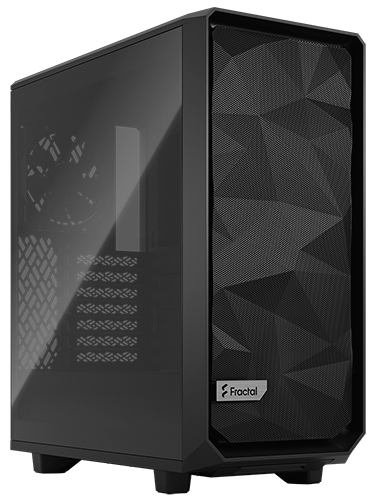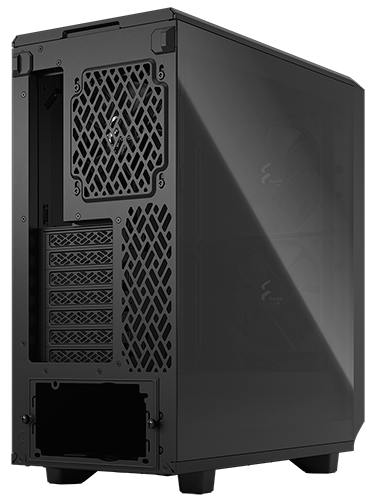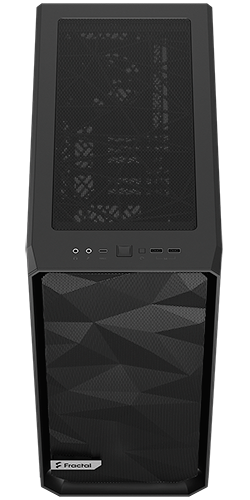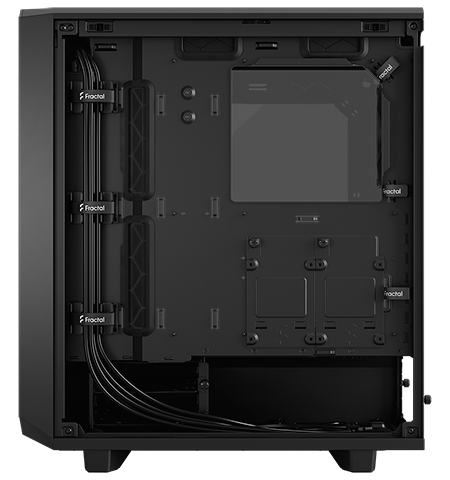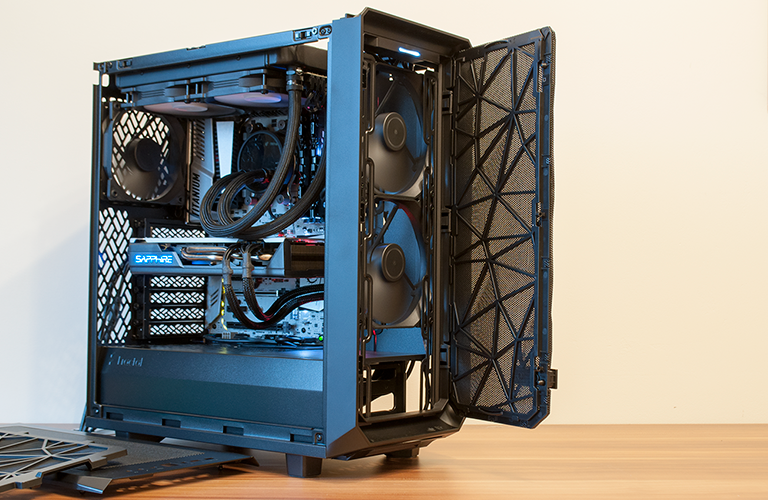Introduction
You saw this one coming, didn't you? Having given its award-winning Define 7 chassis an airflow-optimised Meshify 2 makeover, Fractal Design's smaller Define 7 Compact, introduced in June of 2020, was always going to get the same treatment. Enter the aptly titled Meshify 2 Compact.
Designed to supersede the ageing Meshify C, the forward-looking Meshify 2 Compact arrives at similar price points, ranging from £88 for a solid black chassis, or £97 for a windowed model in a choice of black/grey, white or black (pictured). The regular case will do the trick for most builds, but the grey with tempered glass in particular is rather easy on the eye.
Outside of colour choices, what you get shouldn't come as a surprise as this is for all intents and purposes a slight tweak on the existing Define 7 Compact. It's worth revisiting that review as the two enclosures have plenty in common. Dimensions of 427mm (L) x 210mm (W) x 474mm (H) are practically identical, build quality remains solid throughout, and if Fractal's regular Meshify 2 is too large for your needs, this petite alternative shaves off 111mm in length and 30mm of width to leave a form factor that sits far more comfortably on top of the desk.
There's plenty of attraction to Fractal's shorter cases - all that space at the front of full-sized models is typically wasted without elaborate liquid cooling or excess of storage - but do be mindful of the trade-offs. Meshify 2 Compact doesn't provision for an optical drive, there's no vertical graphics mount, you won't fit an E-ATX motherboard, and the number of available storage bays drops from 11 on Meshify 2 to just the four on M2 Compact.
Not an issue for modern builds, we suppose, as storage has evolved in such a way that most users may not need any storage bays whatsoever. Elsewhere, Fractal keeps the I/O panel unchanged, with a set of audio jacks, USB 3.1 Gen 2 Type-C and two USB 3.2 Gen 1 Type-A flanking the power and reset buttons. Not quite as comprehensive as Define counterparts, which include twice as many Type-A ports, but Meshify does come equipped with three bundled fans. A pair of 140mm Dynamic X2s are pre-installed as front intakes, while a 120mm Dynamic X2 serves as rear exhaust. Given that there is a trio of fans, it's a shame Fractal doesn't ship the Compact series without an integrated fan hub, and do note that the rear 120 can't be upgraded to a 140.
Going Compact may introduce the odd limitation, yet the overall feature set is a noticeable step up from the outgoing Meshify C. The side panels, for example, use the same bottom-hinged and tool-free latch that works wonderfully well on current Fractal enclosures. The chassis' top panel, including radiator tray, is entirely removable for unrestricted access, and the mesh front panel now sits on a hinge for easy access to the filter behind.
The top, bottom and front are all also lined with removable filters, and for an enclosure of this size, seven available fan mounts can be considered decent. These include the rear 120, another 120 on the bottom (albeit at the expense of the HDD cage), two 120/140s up top, and three 120/140s up front. Plenty of room for a 240mm radiator in the roof, or a 280/360 in the front if you prefer. GPUs can measure 341mm in length, maximum CPU cooler height extends to 169mm, and PSU length can reach 165mm with the storage cage in situ.
Our AMD Ryzen test build certainly looks handsome, and a combination of rubber-grommeted holes and Velcro ties do a good job of keeping things tidy around back. They're necessary, too, as there isn't a great deal of room behind the motherboard tray - cabling needs to be tidy to prevent the rear side panel pinging off - and some cables may have to take an alternative route as our power supply frustratingly blocks some of the holes in the top of the PSU shroud.
Effectively the Define 7 Compact optimised for airflow, Meshify 2 Compact is shaping up to be a sensible addition to the range. Let's now see how it benchmarks before coming to a conclusion.



